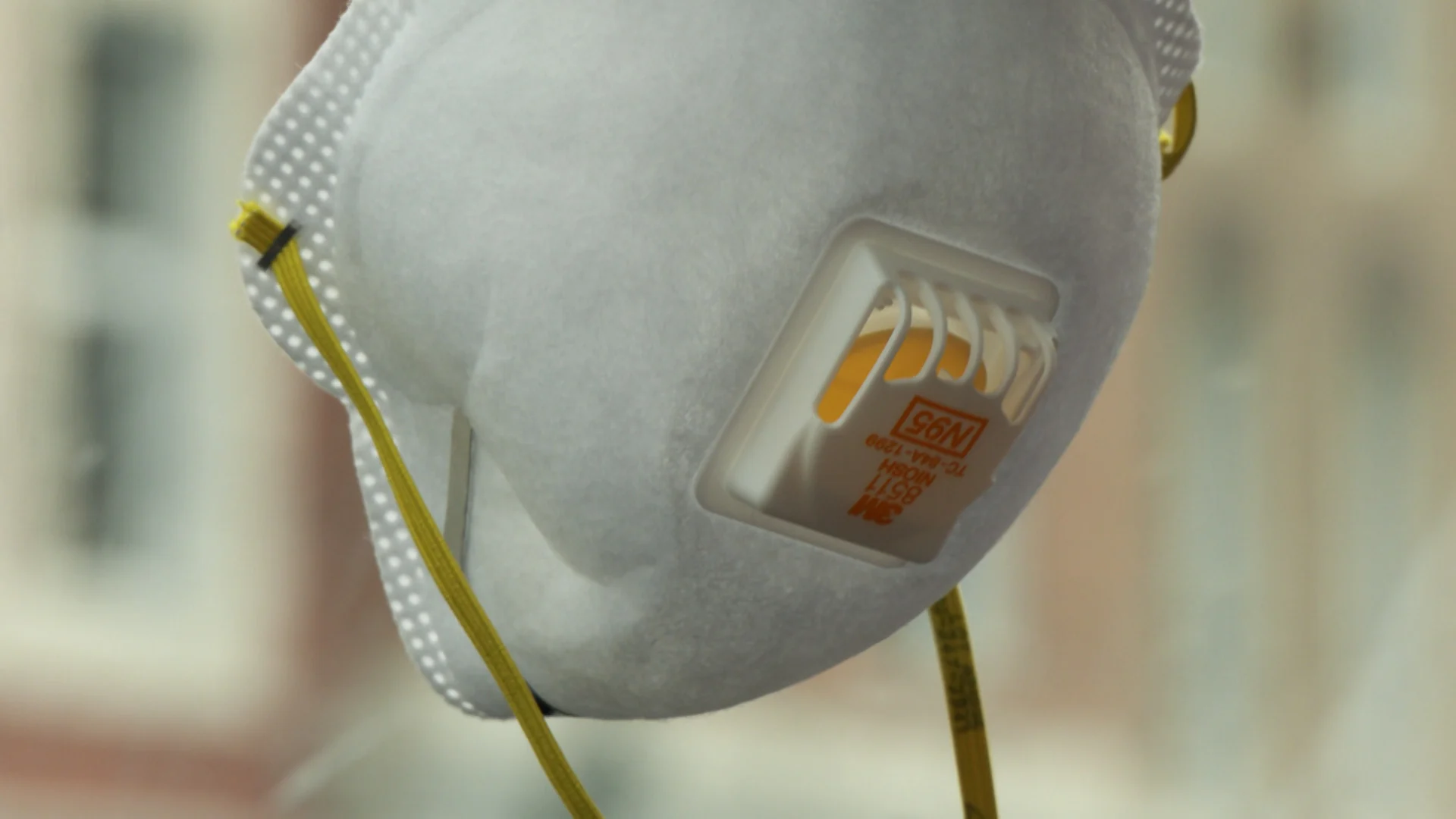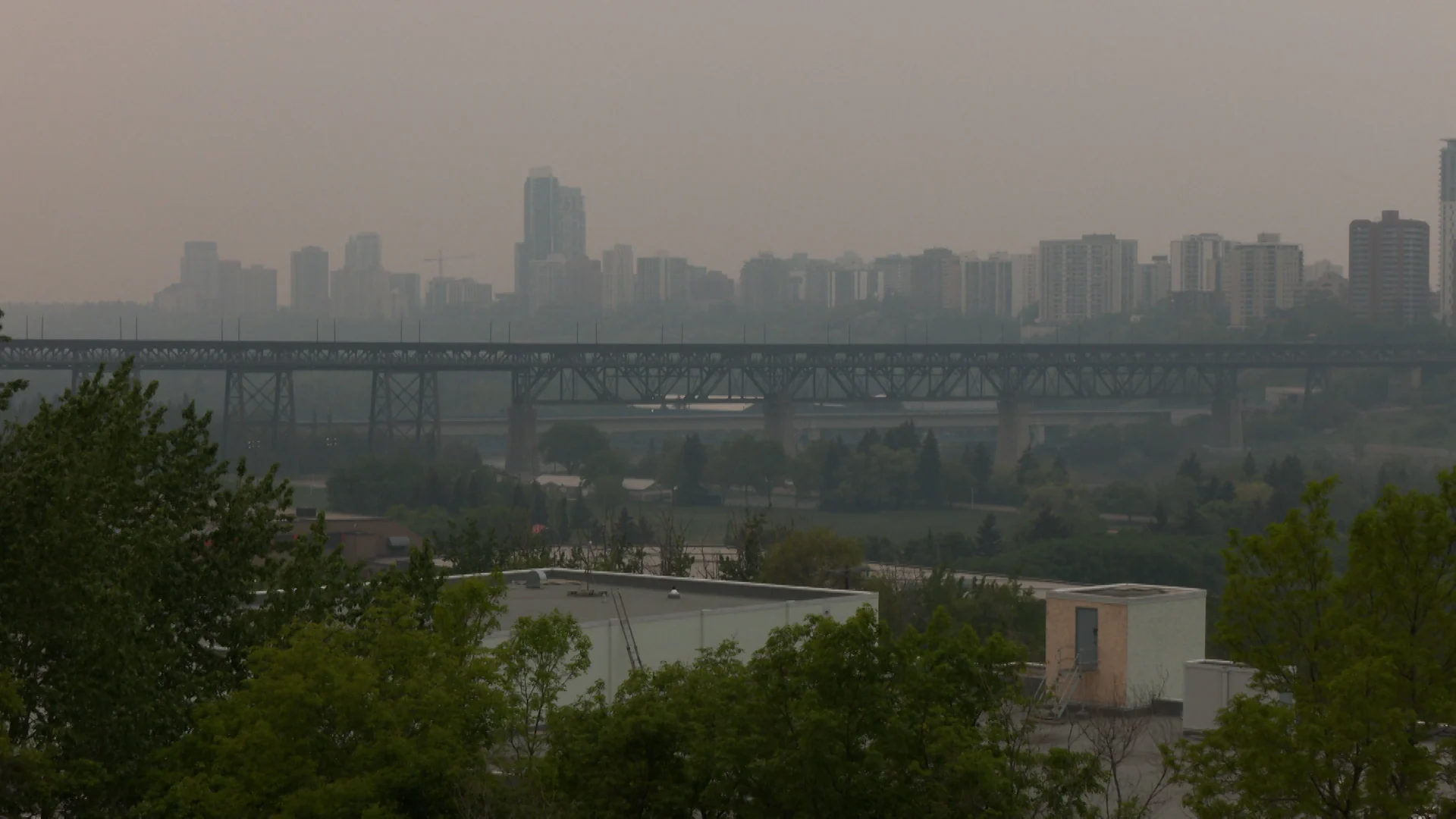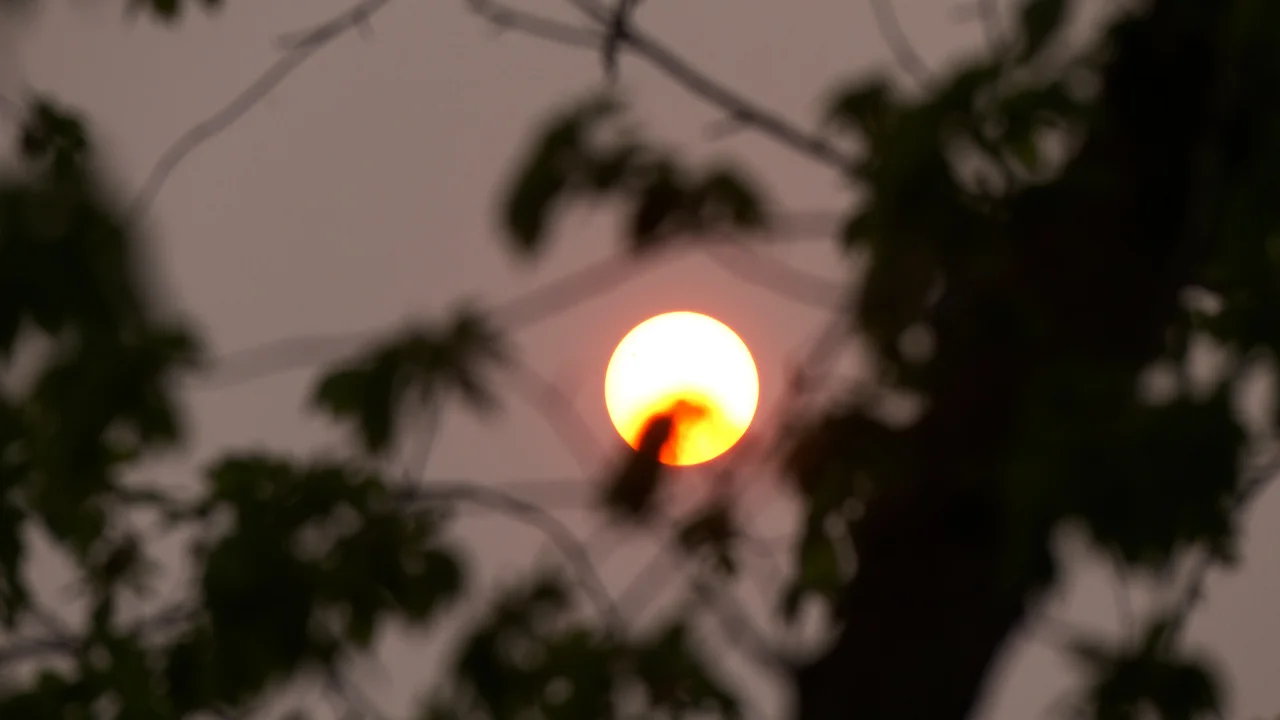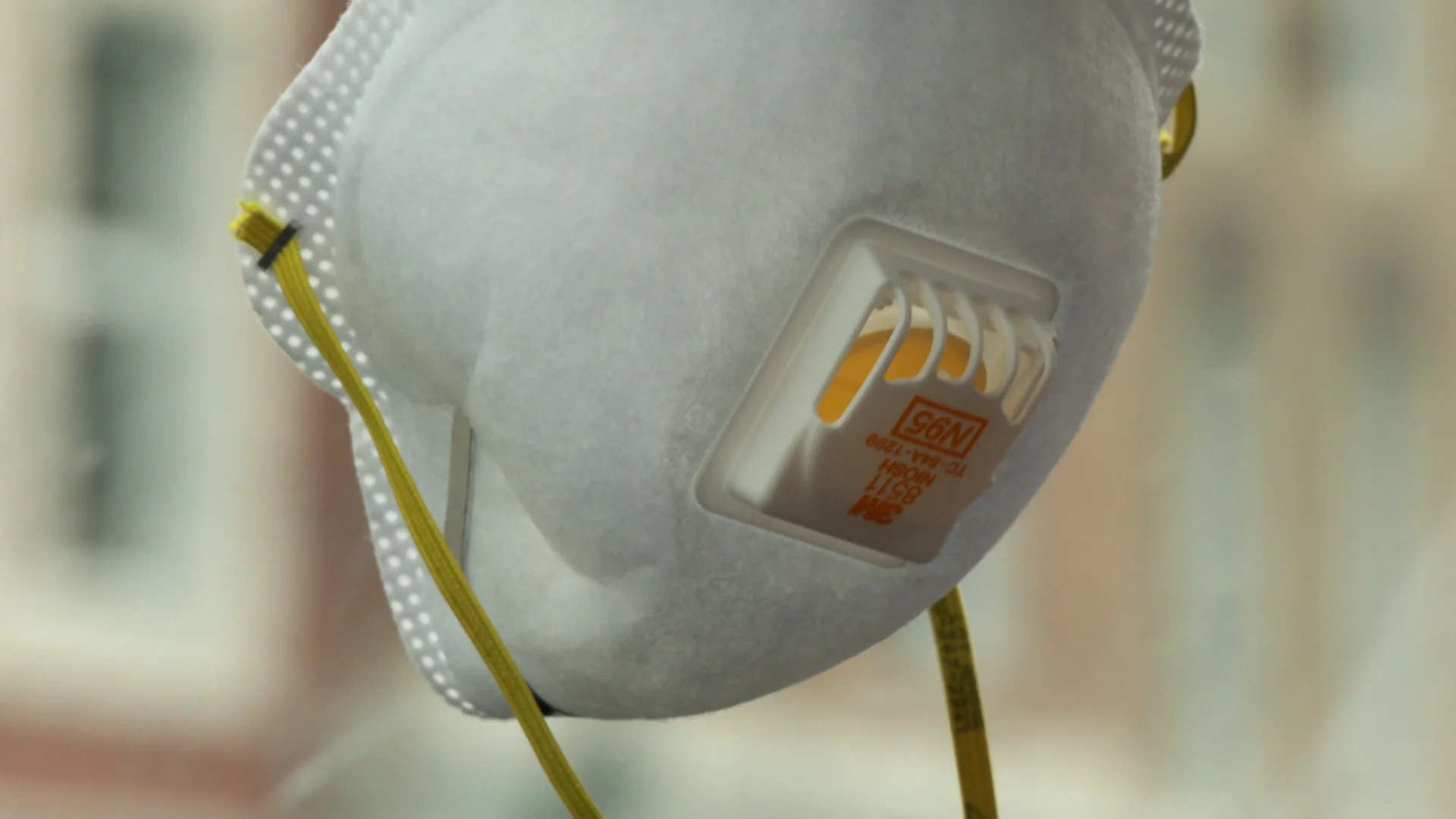
Best practices to keep yourself safe from wildfire smoke
If wildfire smoke is lingering in the skies around you, there are several ways you can protect yourself from the haze when the air quality in your area worsens
According to Health Canada, wildfire smoke can cause everything from a runny nose and sore throat, to severe chest pain and cough. It can also worsen lung and heart conditions, and it puts kids and infants, seniors, pregnant women and the immunocompromised at increased risk of negative effects.
While wildfire smoke contains multiple pollutants, including carbon monoxide and carbon dioxide, Health Canada is particularly concerned with fine particulate matter, or particulate matter 2.5 microns in size or smaller. PM2.5 can penetrate deep into the lungs. The government agency also says studies have shown it can cause a “decline in lung function” and can aggravate conditions including asthma, COPD and heart disease.
Visit The Weather Network's wildfire hub to keep up with the latest on the active start to wildfire season across Canada.
While the smoke in your area may have originated far away, Health Canada says no amount of PM2.5 is safe to breathe in and it recommends taking steps to keep PM2.5 levels as low as possible in your living environment.
If wildfire smoke is lingering in the skies around you, here are several ways you can protect yourself from the haze when the air quality in your area worsens.

(Connor O'Donovan/The Weather Network)
At home
Keep windows and doors closed, limit use of kitchen and bathroom fans
Start by preventing smoke from getting into your home in the first place. While it may seem like common sense, Health Canada reminds those experiencing a smoke-related drop in air quality that it’s best to keep windows and doors closed at all times.
Camfil Canada Inc. marketing manager, Berni Baier, says you should also limit the use of kitchen and bathroom fans as much as possible.
“Using those, you’re now creating a negative pressure system. That air you’re sucking out has to be replaced so if there’s a fire outdoors you’re bringing that air in,” Baier says.
“So seal up your home as much as you can. And there are you can buy that bring in fresh air from outside and exhaust a little bit less so now your home becomes pressurized like a balloon, which can prevent bad air from getting in when you open doors.”

(Connor O'Donovan/The Weather Network)
Install a high-efficiency filter into your HVAC system
HVAC systems often use filters rated on the minimum efficiency reporting value, or MERV system. The higher the MERV rating, the finer the particulate matter the filter can trap. Baier recommends going with a MERV 14 or higher-rated filter, rated to capture 90 per cent of particles 1 to 3 microns in size. He suggests swapping it in and out before and after smoke events to prolong its lifespan.
Adapt your home’s ducting to accommodate a larger high-efficiency filter
Research suggests climate change will only increase the frequency, intensify and prolong the wildfire season. One study suggests that even in a better-case climate change scenario, PM2.5 pollution from wildfire smoke will increase by 55 per cent by the year 2100 and could increase by 190 per cent in worse scenarios.
For a longer-term solution, Baier says you can change the ducting in your home to accommodate a larger, longer-lasting, high performance filter. “Nowadays, that would be $400 or $500 to do, and then you can put a proper 12-inch-deep, high efficiency filter in there. That could last you two years and can even be a MERV 16,” says Baier.
“For people concerned this might be an annual thing, you can put a new duct and a bigger, better filter in, and you’re set.”
WATCH: Does breathing in wildfire smoke mean lung issues for life?
Use your HVAC system’s recirculation mode, and run it at higher speeds and for longer periods of time
You can also set up your HVAC system to recycle air already in your building, and prevent it from drawing in new air from the outdoors --particularly helpful if you have a less-efficient filter or a system that doesn’t create positive air pressure in your home.
“If you do have a furnace in your home, you do have a setting for ‘auto’ or ‘fan.' As long as you have good filters in there, switch it over to ‘fan’ so the fan is constantly running,” Baier adds. “So, now you’re recirculating air through that filter constantly.”
Use a HEPA-rated portable air purifier
If your home doesn’t have forced air, or to further boost air quality, you can buy a portable air purifier that can not only filter out particulate matter but also some of the gasses that cause odours.
Baier says many modern purifiers come fitted with an even more efficient HEPA filter, which is rated to trap 99.97 per cent of particles 0.3 microns in size or larger. He recommends looking for one that also has a carbon filter to take out odours.
Health Canada adds you should ensure you’re buying a filter with a smoke-specific clean air delivery rate high enough to exchange all of the air in a room two to three times an hour.
“Most portable air cleaners are only built for one room. Some companies will actually test ‘pre-air,' so all they do is put the fan on and rate it. But once they put the filters on, it’s not going to move as much air,” Baier cautions.
“The other marketing gimmick out there is [that] some companies will say their products have a ‘true HEPA’ filter. There’s no such thing. An HEPA is an HEPA.”
WATCH: These wildfire terms could help keep you safe this summer
In the car
Upgrade your vehicle’s cabin air filter
While they are not manufactured on the same scale as less-efficient cabin air filters, HEPA filters for vehicle ventilation systems can be purchased for many makes and models. The cabin air filter is typically found behind your glove box, and can easily be replaced without a trip to the mechanic.
Set your vehicle’s ventilation system to "recirculate”
Using your car’s recirculation function, usually triggered with a button bearing an icon in the shape of circular arrow, will cut off the vehicle from outside air.
On the go
Wear a properly fitted N95 mask
As their name suggests, N95 masks filter out 95 per cent of particles 0.3 microns and larger. It’s important to make sure your mask is properly fitted to your face to prevent unfiltered air from leaking in.

(Connor O'Donovan/The Weather Network)
Find an indoor community space to spend time in
If out and about, or if you can’t preserve high air quality in your home, find a public space that practises some for the techniques explained above. Spaces like libraries, shopping malls, schools and gyms might be safe places to find clean air, but it’s best practice to contact building administrators or your local health and municipal authorities to make sure.
Limit outdoor activity, exercise indoors and drink lots of water
Health Canada recommends avoiding strenuous outdoor activities, and exercising indoors during wildfire smoke events. If you’re at heightened risk, Health Canada recommends stopping outdoor activity altogether, and adds that drinking lots of water can help your body cope with the smoke.
